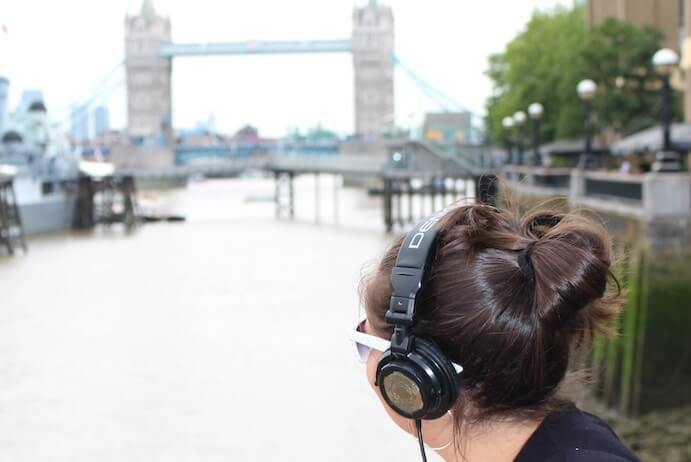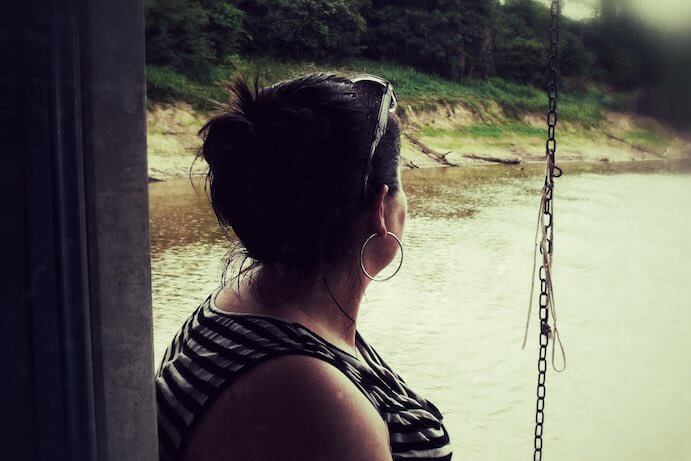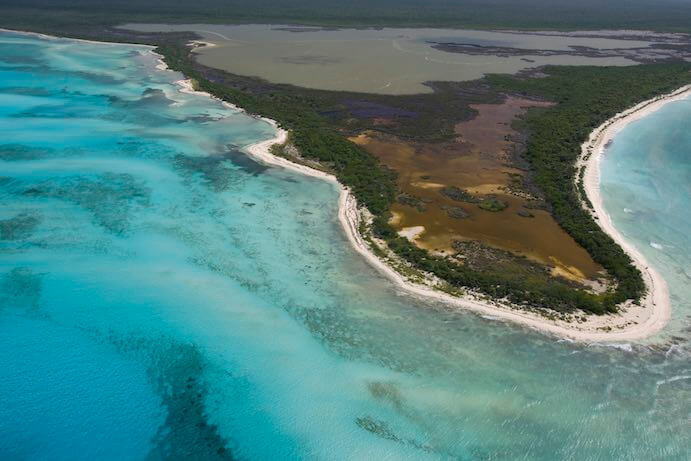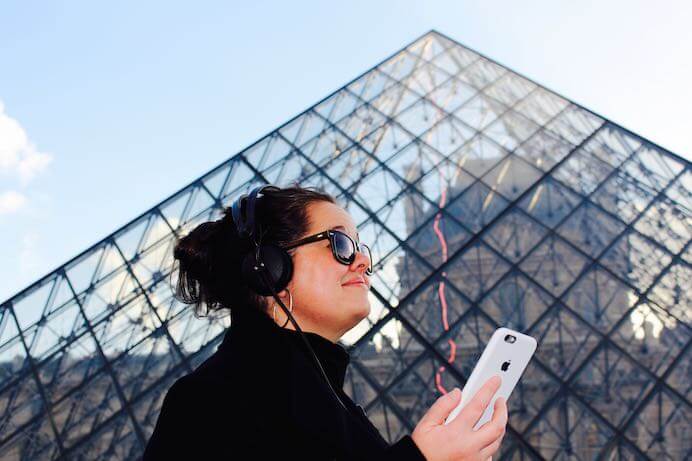As you said in a previous TedX Noosa talk, you were trained as a classical composer. What sparked your interest in electroacoustic music and field recordings?
My music has always drawn inspiration from the places I have lived and travelled. Having witnessed the dramatic effects of climate change in various parts of the world, I was interested in exploring ways my artistic practice could contribute towards environmental engagement. When I began incorporating field recordings into my instrumental compositions, I found the sonic possibilities liberating. Electroacoustic music was a natural progression in composing music that can bring awareness about the current state of our environment. My work now focuses on immersive experiences, ranging from live performances drawing on field recordings from the centre of the Amazon rainforest to interactive installations and augmented reality experiences exploring changing ecosystems across the world.

Leah Barclay: Listening to the Thames
To what part of nature do you feel the deepest personal connection, and why?
What role do you see your art playing in bringing communities together or bringing about social change?
It has become increasingly clear that we rapidly need new ways to communicate the current state of our environment. Fortunately most of the world now agrees climate change is one of the most critical issues we are facing. Yet there has been limited success in inspiring people to make significant changes. The Paris Agreement achieved at COP21 was just the first step in what needs to be a global cultural shift in how people think and act. In our visually dominant society, listening to the state of the environment can reconnect us with nature. Sound can transport us to a place and time and elicit an empathetic response that can be extremely powerful in climate action. We need to inspire people to change deeply ingrained unsustainable lifestyles and make conscious choices. Positive and motivating experiences are much more productive than overwhelming and depressing climate graphs. While I am not suggesting my music has this capacity, I have no doubt music and creativity has incredible agency in social change.
My practice has evolved from writing music inspired by the environment to developing large-scale participatory projects where my compositions are a catalyst for people to engage with conservation in new ways. What began as an exploration of the value of sound in climate change has evolved into a web of projects harnessing music and acoustic ecology to raise cultural and environmental awareness. At the core of these projects is community engagement and accessibility. My compositions have become part of a multi-layered process designed to inspire others to engage in practices of listening, field recording and composition.

Leah Barclay on the Amazon river
What do you hope that listeners will take away from your current Biosphere Soundscapes projects?
Biosphere Soundscapes is a large-scale interdisciplinary project underpinned by the creative possibilities of acoustic ecology and rapidly emerging fields of biology concerned with the study of environmental patterns and changes through sound. This project is designed to inspire communities across the world to listen to the environment and explore the value of sound as a measure for environmental health in UNESCO biosphere reserves. The project is delivered through immersive residencies with artists and scientists, research laboratories, intensive masterclasses and a diversity of creative projects spanning four continents.
Biosphere Soundscapes facilitates partnerships and acts as a catalyst to explore the inherently interdisciplinary nature of sound. As an example, our last residency in Mexico’s Sian Ka’an Biosphere Reserve formed a partnership between the national sound archive, the ministry for environment and a national conservation organization. The project sits at the intersection of art and science, with the recordings providing valuable scientific data for biodiversity analysis and incredible source material for creative works that bring awareness to these environments. I hope this project will continue expanding as a platform for artists, scientists and global communities to collaborate and expose the creative and scientific possibilities of environmental sound to a global audience.

Sian Ka’an Biosphere Reserve
Can you tell me more about any upcoming projects, or any big dreams for the future?
My current projects are all designed to bring awareness to acoustic ecology as a socially engaged, accessible, interdisciplinary field of study that can inspire a culture of listening. These projects stretch well beyond my creative practice and are intended to be global participatory ventures inviting others to collaborate.
My latest project Rainforest Listening is an augmented reality installation that layers rainforest soundscapes in urban environments to inspire ecological engagement. Listeners access the sounds via mobile devices and sculpt their own experience by triggering geolocated soundscapes as they walk through iconic locations across the world. The Rainforest Listening soundscapes are all based on my field recordings from a diversity of ecosystems in the Amazon. This project was created specifically as an engagement tool for Rainforest Partnership, an international NGO founded with a mission to protect tropical rainforests by partnering with people at global and local levels to create lasting solutions to deforestation. By connecting this installation directly to a conservation organization, I am exploring ways of translating this awareness into direct action. Listeners can donate directly to Amazon communities while walking through the installation.
Rainforest Listening launched during Climate Week 2015 in Times Square, New York City and travelled to COP21 in Paris. Listeners can hear the rich biodiversity of insects and birdlife and those who venture deeper into the sound maps can discover the endangered Amazon River dolphins or elusive howler monkeys hidden throughout the city. The Eiffel Tower and surrounding parklands were transformed into an immersive sonic experience layering the four distinct layers of tropical rainforest vegetation over each observatory platform of the Eiffel Tower.
Rainforest Listening is not just an artwork, but a long-term research project that will see recording devices and live streaming networks installed in remote rainforests throughout the world. In the coming years, we hope you will be able to walk through international landmarks, from London Bridge to the Sydney Opera House, and listen to the changing soundscapes of the rainforest.
In 2016 I will be releasing two albums of original compositions both connecting directly to conservation efforts. I also have the opportunity to work on a book documenting the development of many of these projects and a number of commissions exploring the role of sound in understanding rapidly changing ecosystems across the world.






















